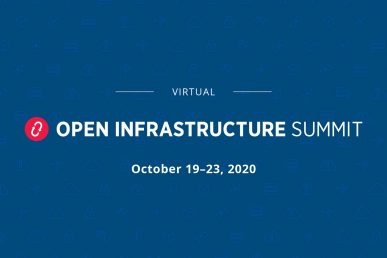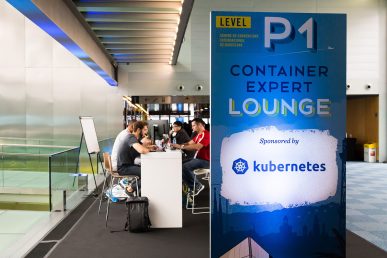Join the people building and operating open infrastructure at the inaugural Open Infrastructure Summit. The Summit schedule features over 300 sessions organized by use cases including: artificial intelligence and machine learning, continuous integration and deployment, containers, edge computing, network functions virtualization, security and public, private and multi-cloud strategies.
In this post we’re highlighting some of the sessions you’ll want to add to your schedule about container infrastructure. Check out all the sessions, workshops and lightning talks focusing on this topic here.
Rook: A new and easy way to run Ceph storage on Kubernetes
Ceph is one of the most popular storage backends for OpenStack and it has a reputation for being complex to set up and to manage. Rook is an open-source project incubated by the Cloud Native Computing Foundation with a goal of providing Ceph block, file, and object storage inside of Kubernetes. It’s more than just running Ceph containers; it’s an intelligent operator that can help deploy and manage Ceph clusters, keeping them healthy with less work. In this session, Blaine Gardner Rook-Ceph maintainer and Suse engineer along with colleauge Stephen Nemeth will introduce Rook and explore the features important for OpenStack storage.
Details here.
Container use-cases and developments at the CERN cloud
Starting with only four OpenStack projects and few hypervisors in 2012, the CERN cloud has evolved significantly, running 16 OpenStack projects, 9,000 hypervisors, over 400 Kubernetes clusters and two production regions. The CERN teams works closely with the OpenStack, Kubernetes and Ceph communities to deliver a self-service cloud for virtual machines, containers, storage and bare metal. Containers have revolutionized the way application developers work, in turn, Kubernetes made management of thousands of containers easy and access to Kubernetes is one OpenStack Magnum API request away. In this talk, Tim Bell and Spyros Trigazis will cover the latest developments in the CERN cloud, focusing on the latest container use cases in high energy physics and recent scale tests to prepare for the upgrades of the Large Hadron Collider and the experiments.
Details here.
Dealing with Kubesprawl – Tetris style!
Kubesprawl is one of the big pain points for organizations operating Kubernetes. The emerging pattern of having Kubernetes clusters per team or even per developer, along with separate environments for dev, test, staging and production can mean that operations teams are dealing with many dozens or even hundreds of Kubernetes clusters. Aside from the complexities of deployment, life cycle management and automation, this can lead to significant expense, in both virtual and physical environments. In this session, Mesosphere’s Matt Jarvis will introduce how we solved that problem in DC/OS, by bin packing multiple Kubernetes clusters onto the same underlying infrastructure to build high density infrastructure. This approach has a number of interesting problems in itself, including handling complex isolation and networking and he’ll offer deep dive into how this works.
Details here.
Tailor-made security: Building a container specific hypervisor
One of the many benefits of the recently introduced Kubernetes RuntimeClass feature is the ability for operators to run hypervisor isolated container workloads and build secure multi-tenant deployments. While projects like Kata Containers allow operators to run their container workloads through a growing list of hypervisors, none of them is exclusively targeting container and Kubernetes specific use cases.
This session from Samuel Ortiz, Intel, and Andreea Florescu, AWS, will describe how to improve container workloads performance, security and density by building a containers dedicated hypervisor. They’ll describe what running a container runtime compatible hypervisor requires by looking more specifically at the Kubernetes runtime interface (CRI). They’ll also show how the recently formed rust-vmm project allows for designing KVM based hypervisors for very customized use cases, including the container ones.
Details here.
See you at the Open Infrastructure Summit in Denver, April 29-May 1! Register here.

)










